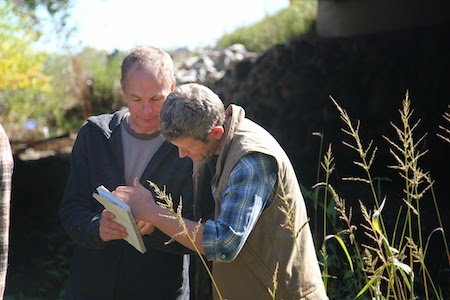Last Monday, I told our Homeschool Group that I was going to share with them the techniques to become knife Skill Wizards. Needless to say, they were excited. Who doesn't want to be a Wizard?
Knives are an essential tool in my toolkit. I carry one (or more) everyday. When I go through airport security, I always feel as though I have forgotten something essential, such as brushing my teeth, merely because I do not have a blade. In general, I carry three blades: a Mora Classic, which is my go-to utility blade, carving bowdrill kits, splitting kindling, skinning and processing animals; a generic folding knife, used for the daily tasks on a farm, which is occasionally sharp; and an Opinel with a carbon steel blade, for finer projects and also my food knife, for apples, sausage and cheese. I have been carrying a knife regularly since the age of seven, and have become somewhat infamous for my love of blades.
Why this passion for knives? From a bird's eye view, the knife is simply a cutting edge, a tool that has been a critical part of our cultural heritage for the past couple of million years. In the practice of primitive and traditional skills, it is in daily use. Fire, projectile weapons, gathering of plants, constructing traps, all rely on the knife.
Yet, for many, carrying a knife is not a daily habit, and many of our lives are not dependent on using a blade. For many of our students, we need to develop a relationship with the knife before we can put it to good, safe and efficient use.
Enter the Scandinavian woodcraft tradition. For some reason, in Scandinavia, ideal blade designs have been preserved (such as the incomparable Mora knives and Gransfors Bruks axes). Similarly, a comprehensive carving system is still maintained. Using a knife requires correct grips and cuts for specific outcomes. Understanding the behavior of a wood's grain is inherent in design. Working with both dry and green wood is understood.
A great way to practice whittling is to make a series of notches, points and end treatments on a stick. I used to call is a "wood doodling stick', and have spent hours creating fanciful designs with a knife. Exercising precision is necessary, and practicing repetition leads to mastery. Once confidence is reached with the doodling stick, spoons are the next point of departure, though complete spoon carving also includes the correct use of a hatchet and spoon knife, plus understanding of the much feared and misunderstood "carving towards oneself".
I am not a wood carver, humbly a passionate whittler. I revel in the shapes that the wood's grain dictates, the feel if a good blade, and the ability to craft useful and delightful objects from the surrounding landscape.
~Neal
 |
| The "try stick" of notches |
 |
| My trusty Mora |
 |
| A reinforced grip |
 |
| A power grip |
 |
| Carving towards myself with a backhand grip |
 |
| Using an anvil to support aggressive shearing strokes |
 |
| Finely curled shavings |
 |
| A gypsy flower |

















































